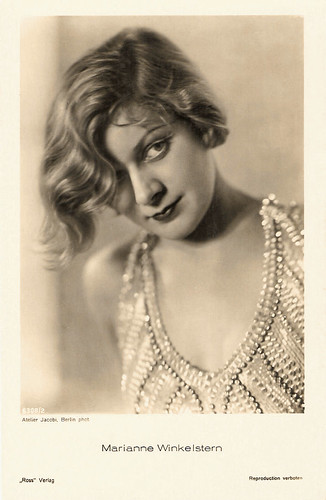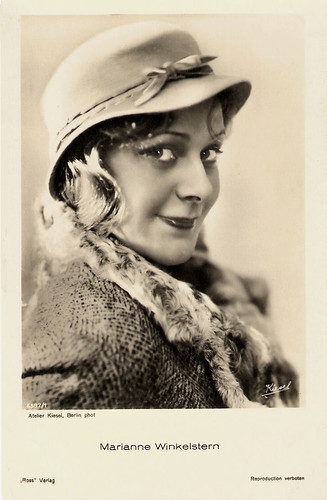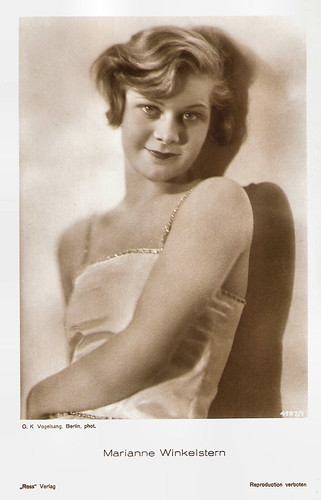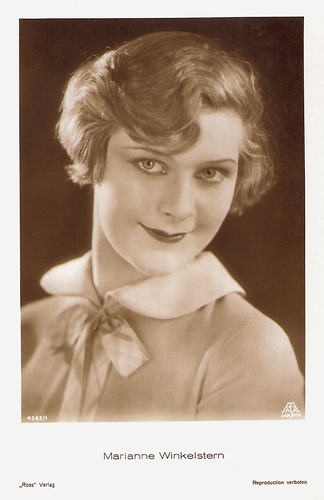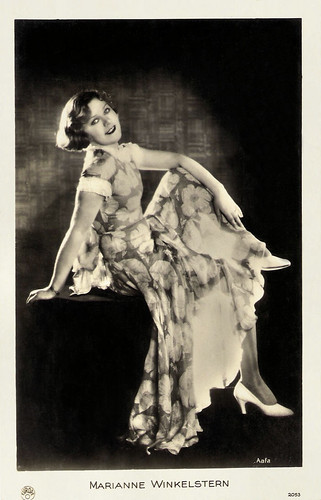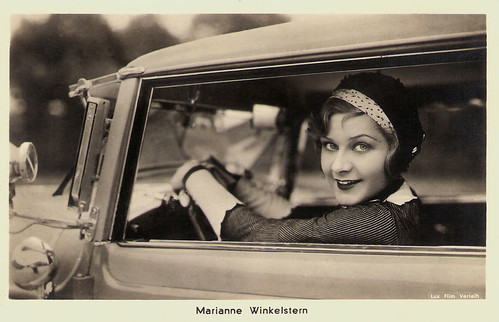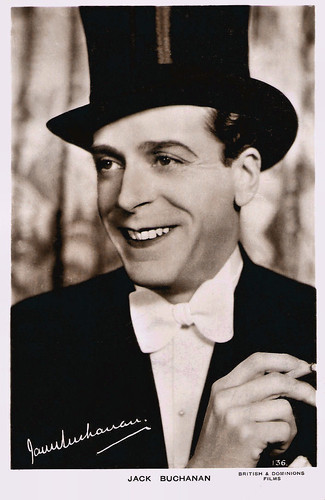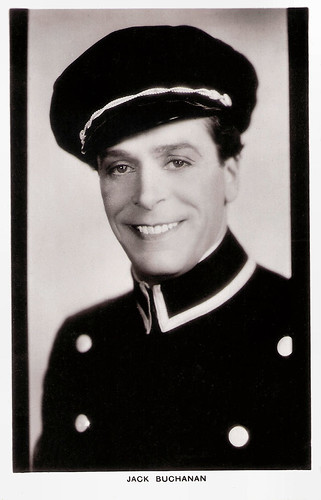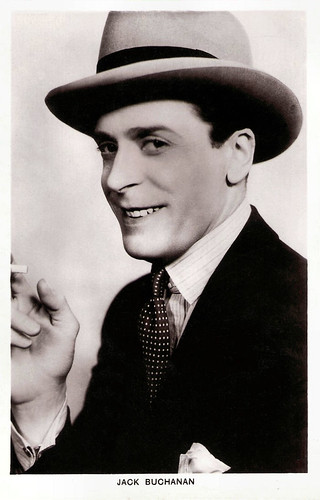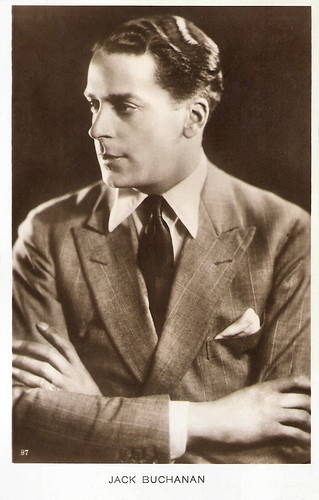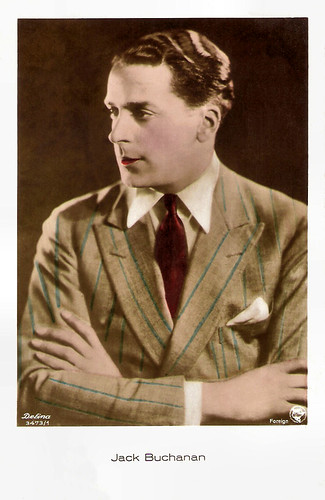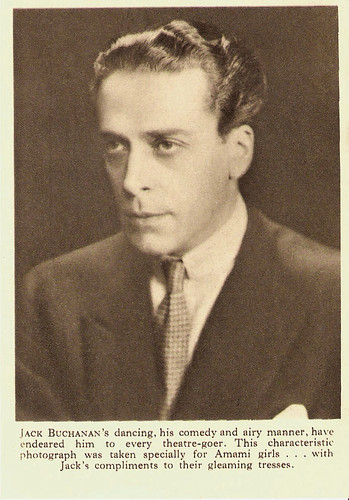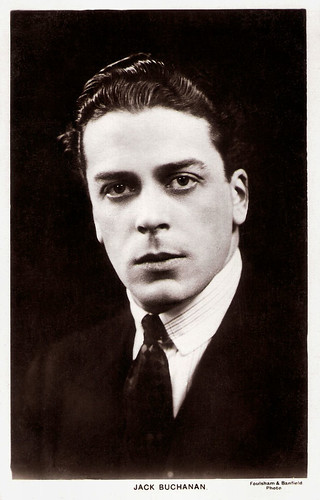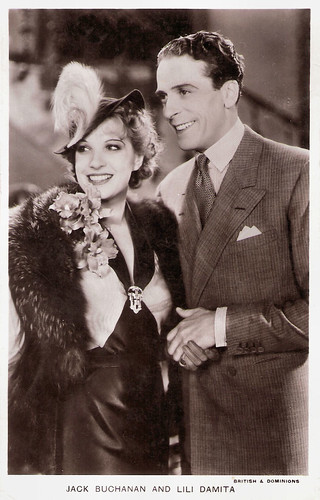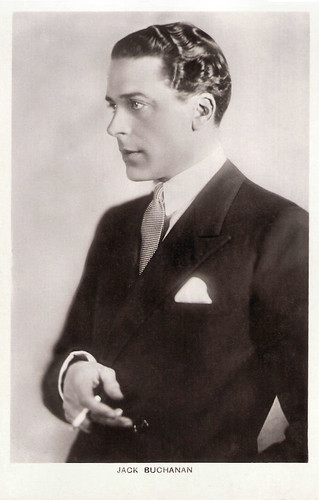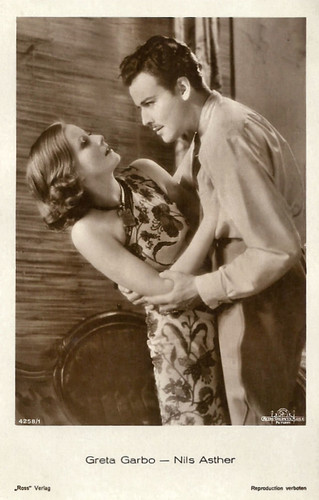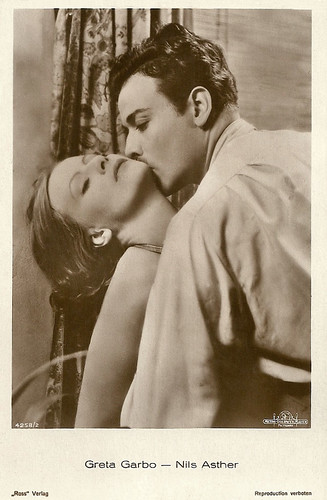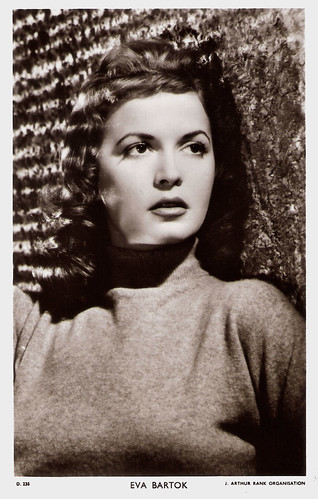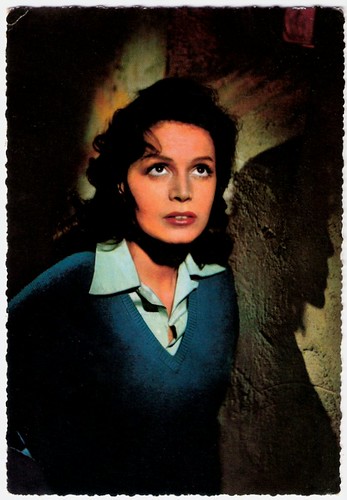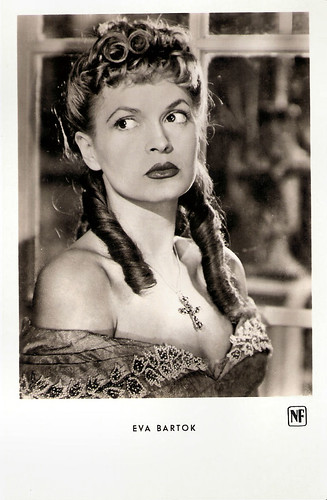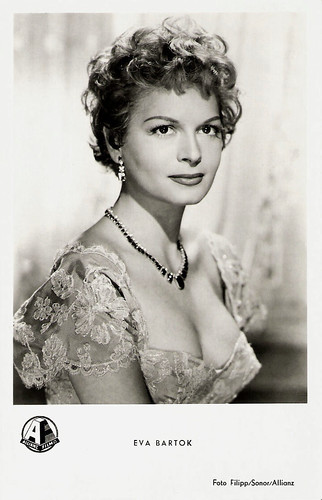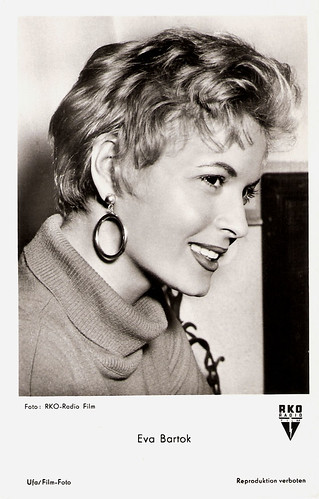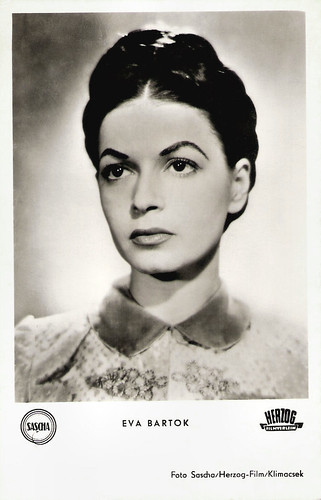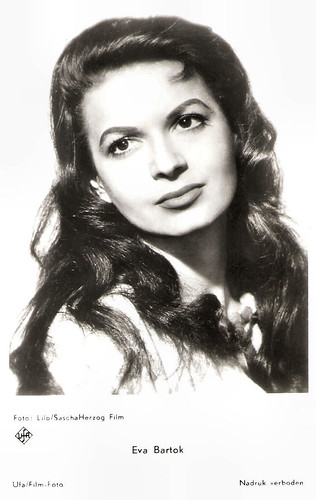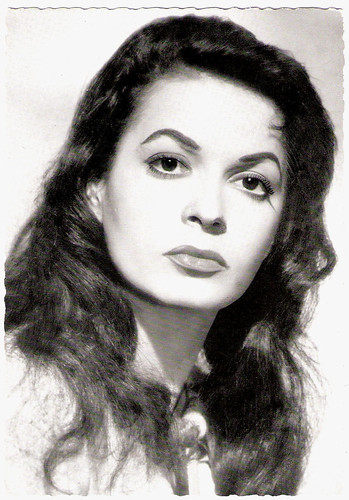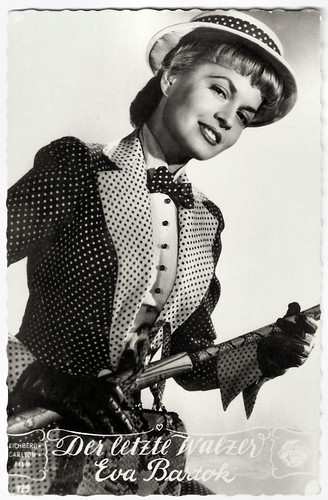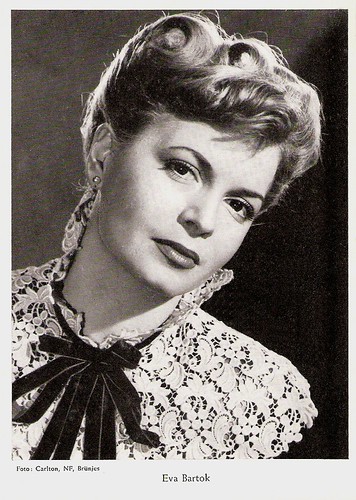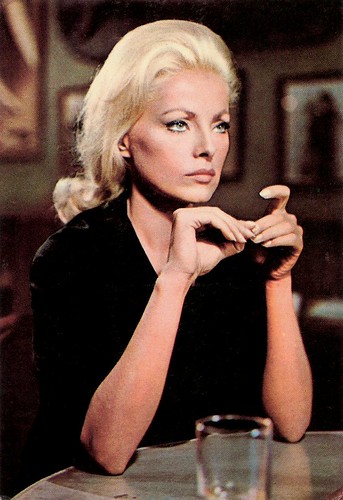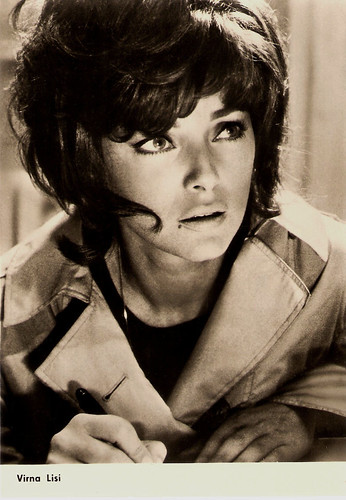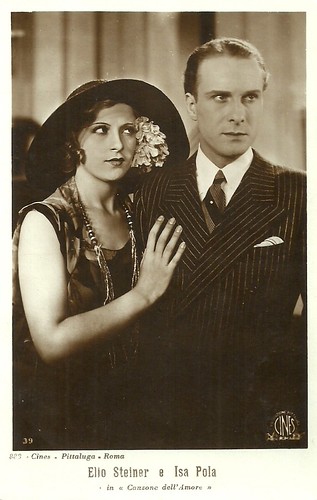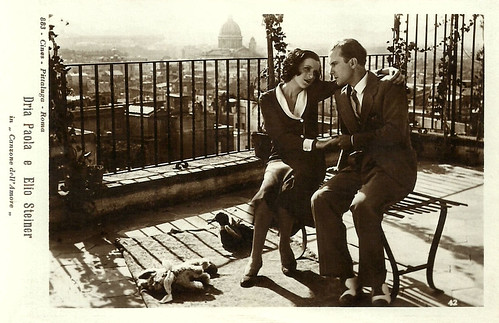Italian actress Laura Nucci (1913-1994) was one of the stars of the Fascist era. Between 1930 and 1989, she appeared in more than 60 films and TV series.
![Laura Nucci]()
Italian postcard by Armando Terzoli, Roma, no. 339. Photo: Vaselli. Postcard for the film Rita da Cascia (Antonio Leonviola, 1943).
![Laura Nucci]()
Italian postcard by Ed. Ballerini & Fratini (B.F.F. Edit.), Firenze, no. 2350. Photo: E.N.I.C.
![Laura Nucci]()
Italian postcard. Photo Bragaglia, Cinecittà, no. 7788.
![Laura Nucci]()
Italian postcard by Ed. Ballerini & Fratini, Firenze, no. 20860. Photo: Venturini.
Laura Nucci was born Maria Laura Lodovici in Carrara, Italy in 1913. She was the sister of actor and stage author Carlo Lodovici.
After she had won a beauty competition at the age of 16, the elegant and voluptuous Nucci made her film debut in the silent film La Leggenda di Wally (Gian Orlando Vassallo, 1930) featuring Linda Pini as La Wally.
One of her next films was the historical drama Palio (1932) directed by Alessandro Blasetti and starring Leda Gloria. The film is set against the backdrop of the Palio di Siena horse race during the Medieval era.
Nucci continued the collaboration with director Alessandro Blasetti and she played the antagonist or the femme fatale in many of his films. She also appeared in films like the comedy Un cattivo soggetto/Bad Subject (Carlo Ludovico Bragaglia, 1933), starring Vittorio De Sica.
Soon she was one of the stars of the Italian cinema of the Fascist era. One of the most important films of the Mussolini regime was the historical film Condottieri (1937) directed by Luis Trenker and starring Trenker, Loris Gizzi and Laura Nucci.
It portrays the life of Giovanni de' Medici, a celebrated Condottiere of the sixteenth century. A separate German-language version was also made. The film received 9.6 million lire of funding from the Italian government, as part as a major drive by the Fascist authorities to develop the Italian film industry (which also involved the construction of the large Cinecittà complex in Rome).
Along with Scipio Africanus, the film was an attempt to harness history to support the Fascist regime's current policies. Condottieri drew parallels between the dictator Benito Mussolini and the historical figure of de' Medici, portraying both as unifying Italy. She also starred in the adventure film Fra' Diavolo/The Adventures of Fra Diavolo (Luigi Zampa, 1942) opposite Enzo Fiermonte. During the German occupation of Rome in 1943-1944, Laura Nucci became a close friend of Erich Priebke, the captain of the Gestapo.
![Laura Nucci]()
Italian postcard by Armando Terzoli, Roma, no. 126.
![Laura Nucci]()
Italian postcard by Armando Terzoli, Roma, no. 221. Photo: Pesce. Publicity still for La Signorina/The young lady (Ladislao Kish, 1942).
![Laura Nucci]()
Italian postcard by Armando Terzoli, Roma, no. 220. Photo: Pesce. Publicity still for La Signorina/The young lady (Ladislao Kish, 1942).
![Laura Nucci]()
Italian postcard by Armando Terzoli, Roma, no. 219. Photo: Pesce. Publicity still for La Signorina/The young lady (Ladislao Kish, 1942).
Laura Nucci’s halted in 1943. Her career was set back by the downfall of the fascist regime, but from 1950 on, she began appearing in films again as a character actress.
She also worked regularly for Italian television. She was part of the cast of the TV series Pride and Prejudice (Daniele D'Anza, 1957).
During the 1960s and 1970s, Nucci appeared in several genre films. The peplum Anthar l'invincibile/Devil of the Desert Against the Son of Hercules (Antonio Margheriti, 1964) was a Italian/French/Spanish co-production filmed in Algeria and featuring bodybuilder Kirk Morris.
She also appeared in a Spaghetti Western, Ramon il Messicano/Ramon the Mexican (Maurizio Pradeaux, 1966). In the giallo Solamente nero/The Bloodstained Shadow (Antonio Bido, 1978), she played the stepmother of Stefania Casini.
One of her best known films is the crime film A ciascuno il suo/We Still Kill the Old Way (Elio Petri, 1967), starring Gian Maria Volonté and Irene Papas. It was entered into the 1967 Cannes Film Festival where it won the award for Best Screenplay. It was written by Elio Petri and Ugo Pirro.
On television, Nucci played the role of Mrs. Ida in the film Ricomincio da tre/Groundhog Day Three (Massimo Troisi, 1981). She was also known for films such as Colpire al cuore/Blow to the Heart (Gianni Amelio, 1983) and Fratelli d'Italia (Neri Parenti 1989).
Laura Nucci died in 1994 in Rome, Lazio, Italy.
![Laura Nucci]()
Italian postcard by Ed. Ballerini & Fratini (B.F.F. Edit.), Firenze, no. 3817. Photo: E.N.I.C.
![Laura Nucci]()
Italian postcard, no. 52. Photo: Vaselli.
![Laura Nucci]()
Italian postcard by Ed. Ballerini & Fratini, Firenze, no. 4364. Photo: Vaselli / Atlas Film / Artisti Associati. Publicity still for Rita da Cascia (Antonio Leonviola, 1943).
![Laura Nucci]()
Italian postcard by Aser, Roma, no. N 1. Photo: Ciolfi.
Sources: Wikipedia (English, German and Italian) and IMDb.

Italian postcard by Armando Terzoli, Roma, no. 339. Photo: Vaselli. Postcard for the film Rita da Cascia (Antonio Leonviola, 1943).

Italian postcard by Ed. Ballerini & Fratini (B.F.F. Edit.), Firenze, no. 2350. Photo: E.N.I.C.

Italian postcard. Photo Bragaglia, Cinecittà, no. 7788.

Italian postcard by Ed. Ballerini & Fratini, Firenze, no. 20860. Photo: Venturini.
Beauty competition
Laura Nucci was born Maria Laura Lodovici in Carrara, Italy in 1913. She was the sister of actor and stage author Carlo Lodovici.
After she had won a beauty competition at the age of 16, the elegant and voluptuous Nucci made her film debut in the silent film La Leggenda di Wally (Gian Orlando Vassallo, 1930) featuring Linda Pini as La Wally.
One of her next films was the historical drama Palio (1932) directed by Alessandro Blasetti and starring Leda Gloria. The film is set against the backdrop of the Palio di Siena horse race during the Medieval era.
Nucci continued the collaboration with director Alessandro Blasetti and she played the antagonist or the femme fatale in many of his films. She also appeared in films like the comedy Un cattivo soggetto/Bad Subject (Carlo Ludovico Bragaglia, 1933), starring Vittorio De Sica.
Soon she was one of the stars of the Italian cinema of the Fascist era. One of the most important films of the Mussolini regime was the historical film Condottieri (1937) directed by Luis Trenker and starring Trenker, Loris Gizzi and Laura Nucci.
It portrays the life of Giovanni de' Medici, a celebrated Condottiere of the sixteenth century. A separate German-language version was also made. The film received 9.6 million lire of funding from the Italian government, as part as a major drive by the Fascist authorities to develop the Italian film industry (which also involved the construction of the large Cinecittà complex in Rome).
Along with Scipio Africanus, the film was an attempt to harness history to support the Fascist regime's current policies. Condottieri drew parallels between the dictator Benito Mussolini and the historical figure of de' Medici, portraying both as unifying Italy. She also starred in the adventure film Fra' Diavolo/The Adventures of Fra Diavolo (Luigi Zampa, 1942) opposite Enzo Fiermonte. During the German occupation of Rome in 1943-1944, Laura Nucci became a close friend of Erich Priebke, the captain of the Gestapo.

Italian postcard by Armando Terzoli, Roma, no. 126.

Italian postcard by Armando Terzoli, Roma, no. 221. Photo: Pesce. Publicity still for La Signorina/The young lady (Ladislao Kish, 1942).

Italian postcard by Armando Terzoli, Roma, no. 220. Photo: Pesce. Publicity still for La Signorina/The young lady (Ladislao Kish, 1942).

Italian postcard by Armando Terzoli, Roma, no. 219. Photo: Pesce. Publicity still for La Signorina/The young lady (Ladislao Kish, 1942).
Spaghetti Western
Laura Nucci’s halted in 1943. Her career was set back by the downfall of the fascist regime, but from 1950 on, she began appearing in films again as a character actress.
She also worked regularly for Italian television. She was part of the cast of the TV series Pride and Prejudice (Daniele D'Anza, 1957).
During the 1960s and 1970s, Nucci appeared in several genre films. The peplum Anthar l'invincibile/Devil of the Desert Against the Son of Hercules (Antonio Margheriti, 1964) was a Italian/French/Spanish co-production filmed in Algeria and featuring bodybuilder Kirk Morris.
She also appeared in a Spaghetti Western, Ramon il Messicano/Ramon the Mexican (Maurizio Pradeaux, 1966). In the giallo Solamente nero/The Bloodstained Shadow (Antonio Bido, 1978), she played the stepmother of Stefania Casini.
One of her best known films is the crime film A ciascuno il suo/We Still Kill the Old Way (Elio Petri, 1967), starring Gian Maria Volonté and Irene Papas. It was entered into the 1967 Cannes Film Festival where it won the award for Best Screenplay. It was written by Elio Petri and Ugo Pirro.
On television, Nucci played the role of Mrs. Ida in the film Ricomincio da tre/Groundhog Day Three (Massimo Troisi, 1981). She was also known for films such as Colpire al cuore/Blow to the Heart (Gianni Amelio, 1983) and Fratelli d'Italia (Neri Parenti 1989).
Laura Nucci died in 1994 in Rome, Lazio, Italy.

Italian postcard by Ed. Ballerini & Fratini (B.F.F. Edit.), Firenze, no. 3817. Photo: E.N.I.C.

Italian postcard, no. 52. Photo: Vaselli.

Italian postcard by Ed. Ballerini & Fratini, Firenze, no. 4364. Photo: Vaselli / Atlas Film / Artisti Associati. Publicity still for Rita da Cascia (Antonio Leonviola, 1943).

Italian postcard by Aser, Roma, no. N 1. Photo: Ciolfi.
Sources: Wikipedia (English, German and Italian) and IMDb.

